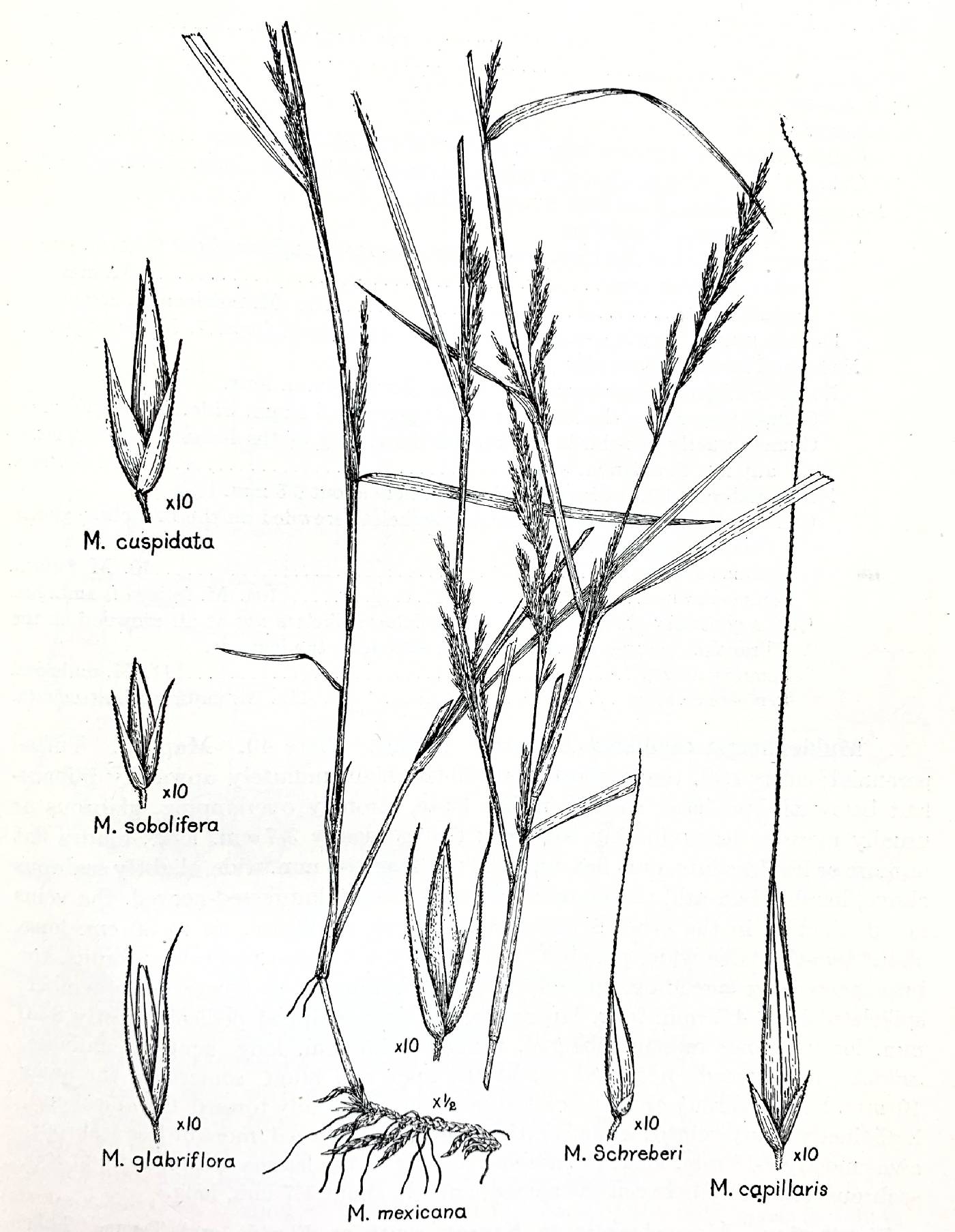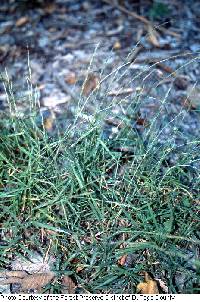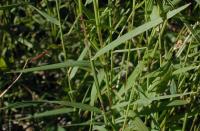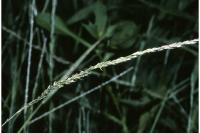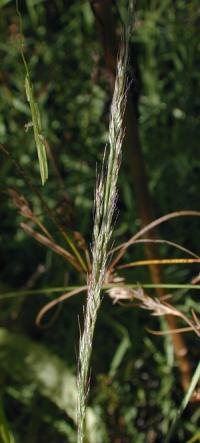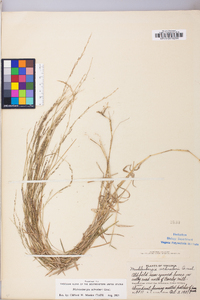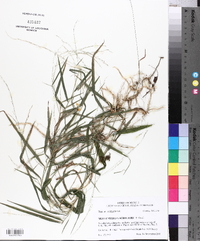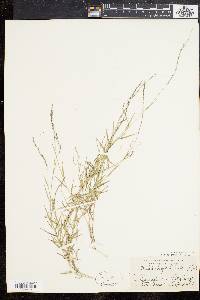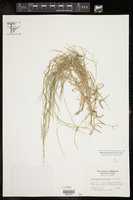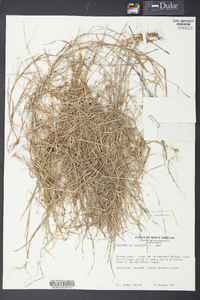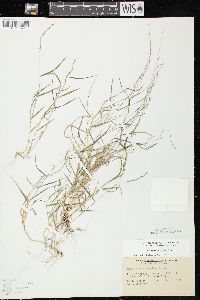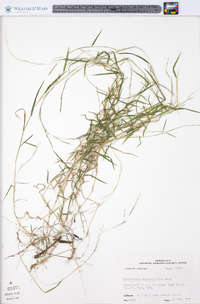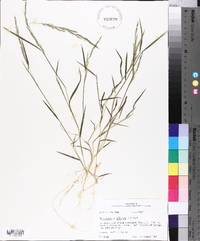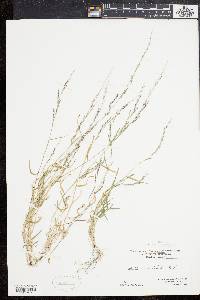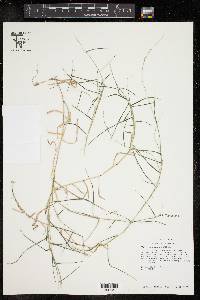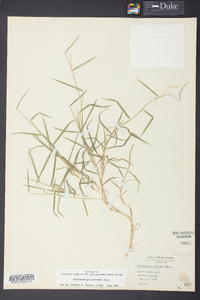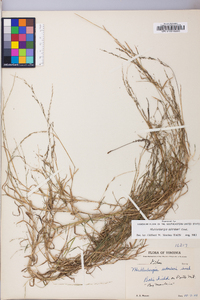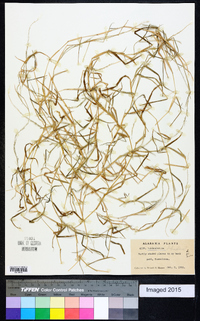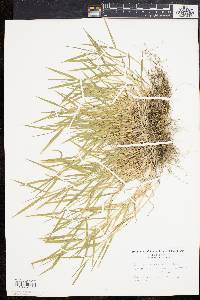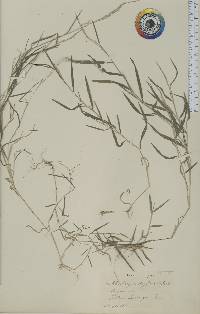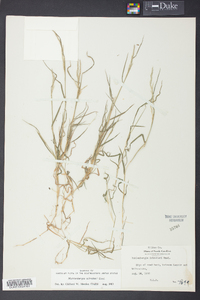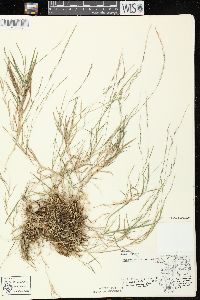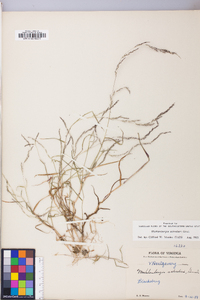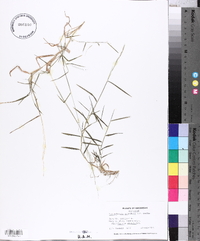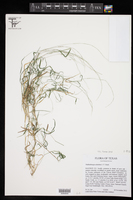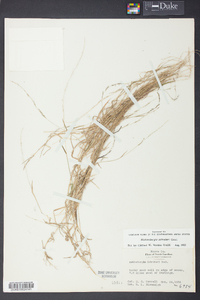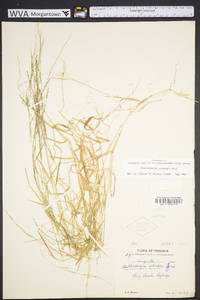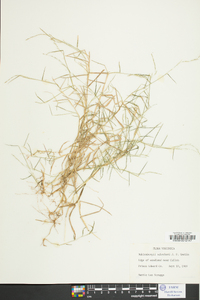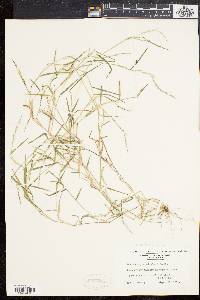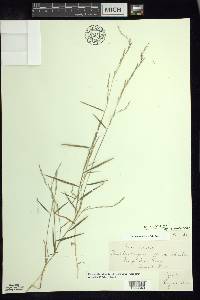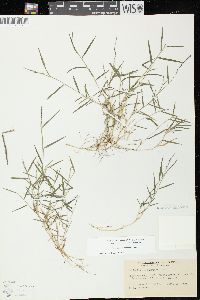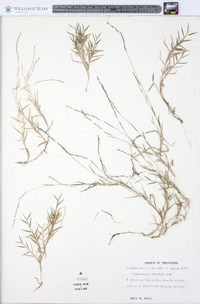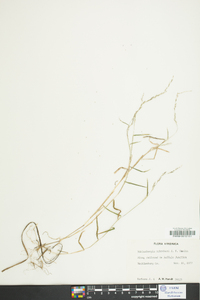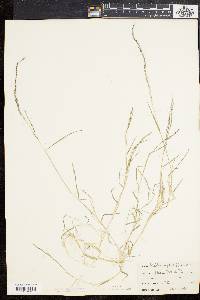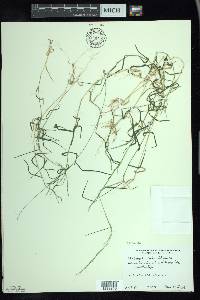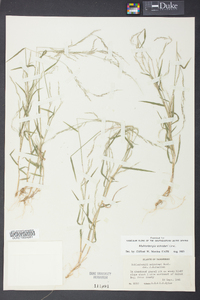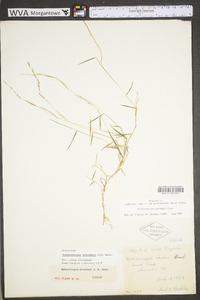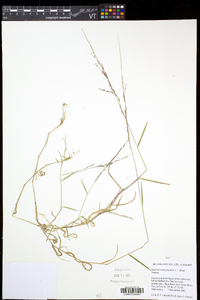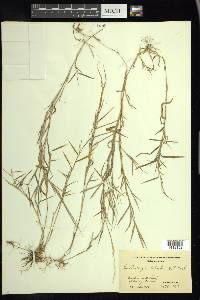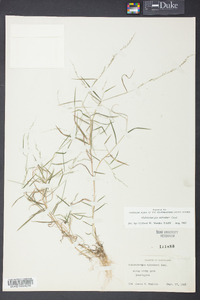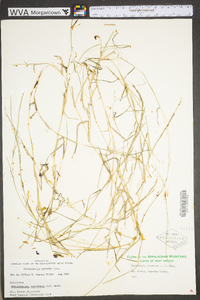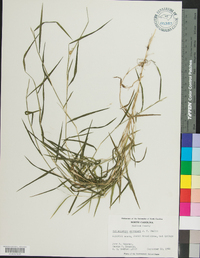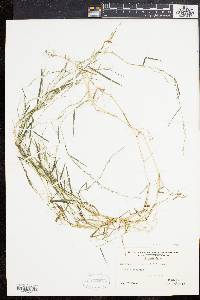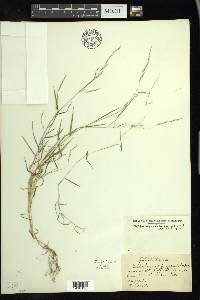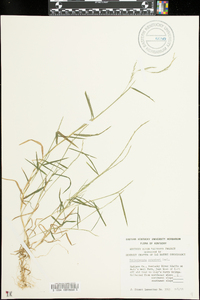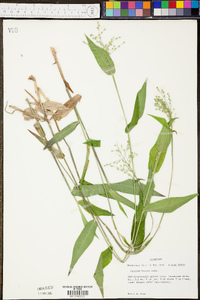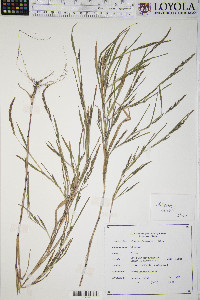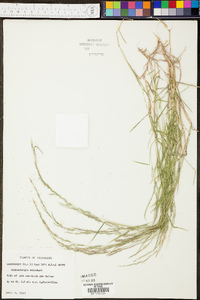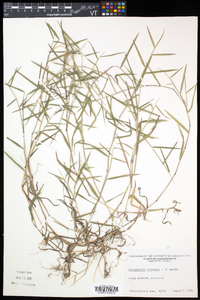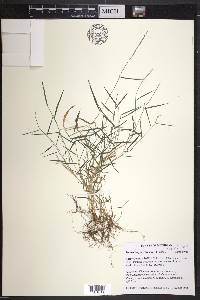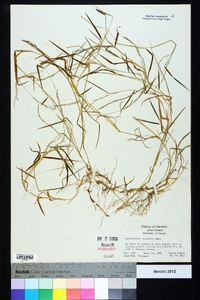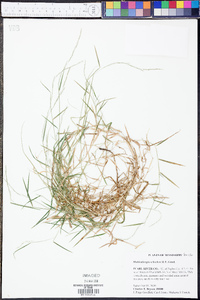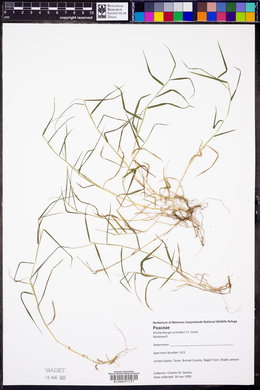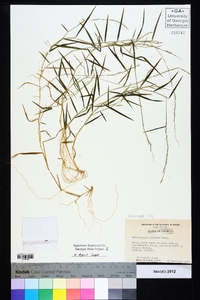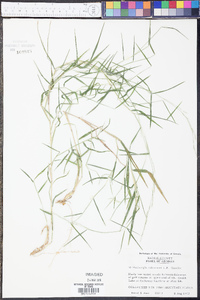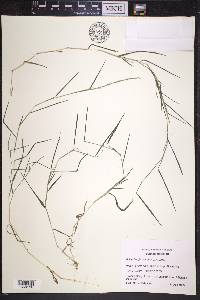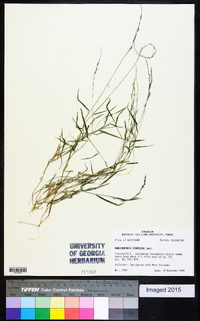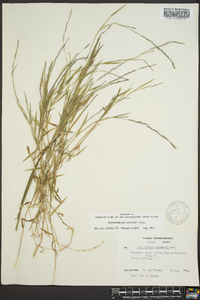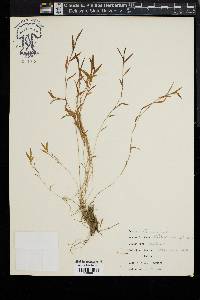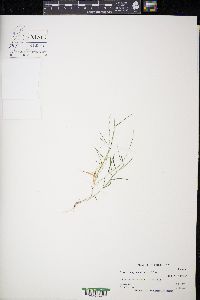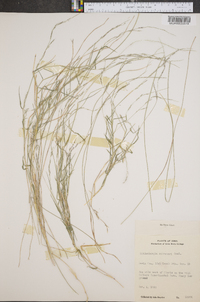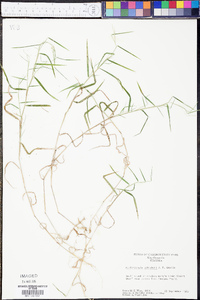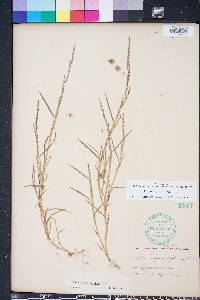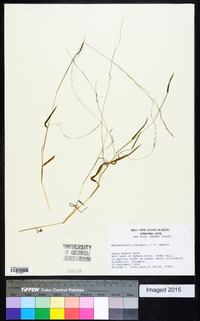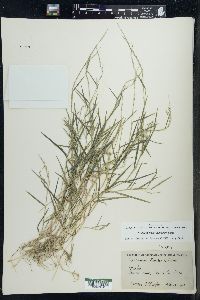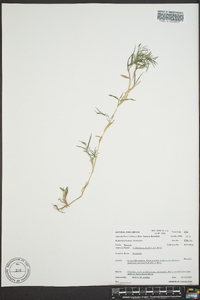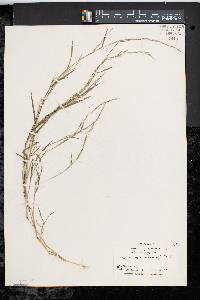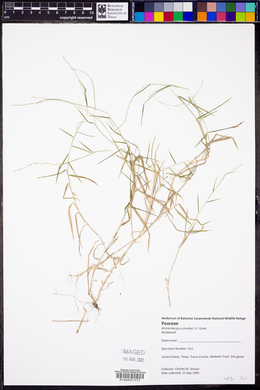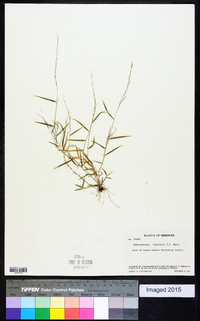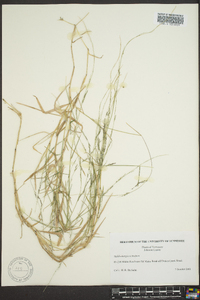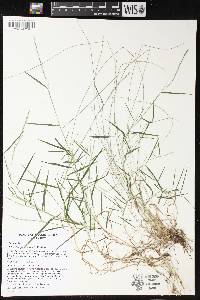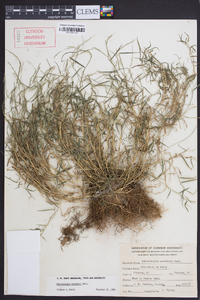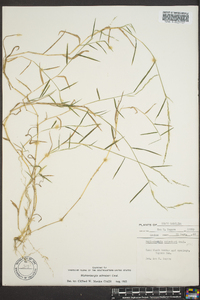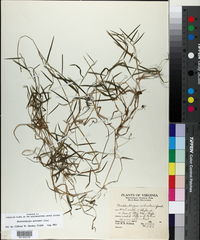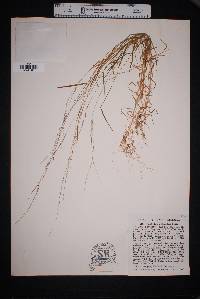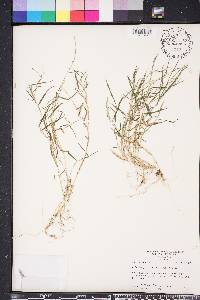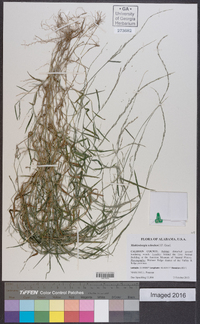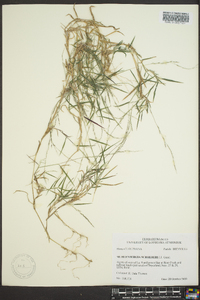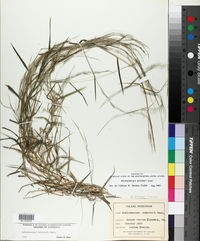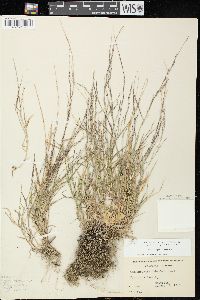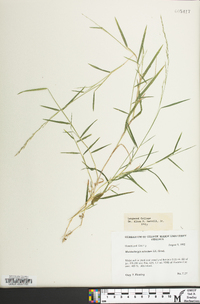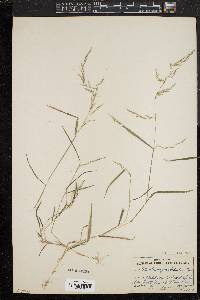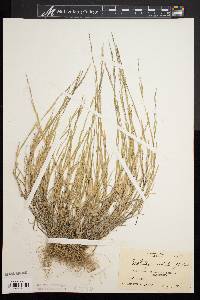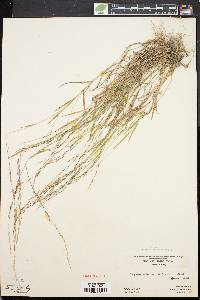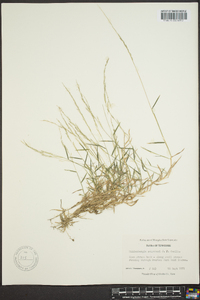
|
|
|
|
Family: Poaceae
Nimblewill
[Agrostis apetala Bosc ex Trin., moreAgrostis oligantha Roem. & Schult., Agrostis pauciflora Pursh, Cynodon diffusus (Willd.) Raspail, Muhlenbergia botterii E. Fourn., Muhlenbergia minutiflora (Michx.) Hitchc., Muhlenbergia palustris Scribn., Muhlenbergia schreberi subsp. palustris (Scribn.) Scribn., Muhlenbergia schreberi var. palustris Scribn., Polypogon pauciflorus Spreng.] |
Plants perennial (appearing annual); usually cespitose, not rhizomatous, sometimes stoloniferous. Culms 10-45(70) cm, geniculate, often rooting at the lower nodes, glabrous or puberulent below the nodes; internodes often smooth, shiny, glabrous. Sheaths shorter than the internodes, glabrous for most of their length, margins shortly (0.3-1.2 mm) pubescent distally, not becoming spirally coiled when old; ligules 0.2-0.5 mm, truncate, erose, ciliate; blades (1)3-10 cm long, 1-4.5 mm wide, flat, smooth or scabridulous. Panicles 3-15 cm long, 1-1.6 cm wide, contracted, often interrupted below; branches 0.4-5.5 cm, appressed or diverging up to 30° from the rachises, spikelet-bearing to the base; pedicels 0.1-4 mm, scabrous to hirsute; disarticulation above the glumes. Spikelets 1.8-2.8 mm, borne singly. Glumes unequal, shorter than the florets, thin and membranous throughout, unawned; lower glumes lacking or rudimentary, veinless, rounded and often erose; upper glumes 0.1-0.3 mm, veinless; lemmas 1.8-2.8 mm, oblong-elliptic, mostly scabrous, calluses hairy, hairs to 0.8 mm, veins greenish, lower 1/4 of the midveins with a few appressed hairs, apices acute to acuminate, awned, awns 1.5-5 mm, straight; paleas 1.8-2.8 mm, oblong-elliptic, acute to acuminate; anthers 0.2-0.5 mm, yellow. Caryopses 1-1.4 mm, fusiform, brownish. 2n = 40, 42. Muhlenbergia schreberi grows in moist to dry woods and prairies on rocky slopes, in ravines, and along sandy riverbanks, at elevations of 60-1600 m. It is also common in disturbed sites near cultivated fields, pastures, and roads at these elevations. Its geographic range includes central, but not northern, Mexico. Records from the western United States probably reflect recent introductions. The species is considered a noxious, invasive weed in California. Perennial usually tufted herb, sometimes runner-bearing 10 - 0.85 m tall Leaves: with sheaths that are open, shorter than the internodes, mostly hairless but with short hairs lining the margin near the tip. The ligules are 0.2 - 0.5 mm long and flat-topped, with unevenly cut margins that are lined with hairs. Blades 1 - 10 cm long, 1 - 4.5 mm wide, flat, smooth or minutely rough. Inflorescence: terminal, spike-like and branched (panicle), 3 - 15 cm long, 1 - 1.6 cm wide, usually interrupted in lower part. The branches are 0.4 - 5.5 cm long, appressed or diverging to 30 degrees from the main axis, and bear spikelets along the entire length. Fruit: a brownish, spindle-shaped caryopsis, 1 - 1.4 mm long. Culm: 10 cm - 0.7 m long, with abrupt bends at the nodes (geniculate), usually rooting at the lower nodes, the internodes hairless or minutely hairy just below the nodes but usually shiny and hairless elsewhere. Spikelets: 1.8 - 2.8 mm long, borne on rough to stiff-haired stalks 0.1 - 4 mm long. Glumes: unequal, thin and membranous, without veins. The lower glume is absent or poorly developed, rounded and usually unevenly cut, and the upper glume is 0.1 - 0.3 mm long. Florets: with yellow anthers 0.2 - 0.5 mm long. Lemma: 1.8 - 2.8 mm long, oblong-elliptic with a pointed tip ending in an awn 1.5 - 5 mm long, rough, with three green veins, the base of the midvein being sparsely appressed-hairy. Palea: 1.8 - 2.8 mm long, oblong-elliptic with a pointed tip, two-veined. Similar species: Muhlenbergia x curtisetosa, Muhlenbergia sobolifera, Muhlenbergia racemosa, Muhlenbergia bushii, Muhlenbergia frondosa, and Muhlenbergia glabrifloris have shiny, mostly hairless culms like Muhlenbergia schreberi, but they differ by having well-developed glumes. Flowering: early August to late September Habitat and ecology: Common in partly shaded lawns, waste ground and other disturbed areas. Occurence in the Chicago region: native Etymology: Muhlenbergia is named after American botanist, Gotthilf Henry Ernest Muhlenberg (1753-1815). Schreberi is named after German botanist, Johann Daniel Christian von Schreber (1739-1810). Author: The Morton Arboretum Perennial 2-6(-9) dm, at first erect and clustered, but the weak, slender culms later sprawling and rooting at the lower nodes; internodes glabrous; lvs glabrous except around the orifice of the sheath and base of the blade; sheaths usually shorter than the internodes; ligule minute, ciliolate, only 0.1-0.2 mm; blades 2-8 cm נ1-4 mm; infls very slender, usually on peduncles exsert 1-10 cm, 2-10 cm נ1.5-3(-6) mm, the branches appressed; glumes minute and veinless, membranous, the second 0.1-0.3 mm, the first even shorter or virtually obsolete; lemma 1.5-2 mm, slightly bearded on the callus; awn 1.5-4 mm; anthers 0.1-0.4 mm; 2n=40. Disturbed, moist or wet places, often a weed in lawns and gardens; N.H. and Mass. to Minn. and Nebr., s. to Fla. and Mex. (M. palustris) Hybridizes with several other spp., possibly nos. 3 [Muhlenbergia tenuiflora (Willd.) Britton, Sterns & Poggenb.] , 6 [Muhlenbergia frondosa (Poir.) Fernald], and 7 [Muhlenbergia bushii R. W. Pohl], producing plants with slightly larger glumes (these sometimes with 1 or 2 veins), with or without short rhizomes. These are sometimes collectively called M. أurtisetosa (Scribn.) Bush. Gleason, Henry A. & Cronquist, Arthur J. 1991. Manual of vascular plants of northeastern United States and adjacent Canada. lxxv + 910 pp. ©The New York Botanical Garden. All rights reserved. Used by permission. From Flora of Indiana (1940) by Charles C. Deam Infrequent to frequent throughout the state. It is found usually in dry soils and less frequently in moist soils in open woodland, clearings, woods pastures, and pasture fields. It is usually conspicuous in pasture fields because stock graze around it, preferring other herbage. It is also found about dwellings and in lawns and is an obnoxious weed in flower gardens. …… Indiana Coefficient of Conservatism: C = 0 Wetland Indicator Status: FAC |
|
|
|

